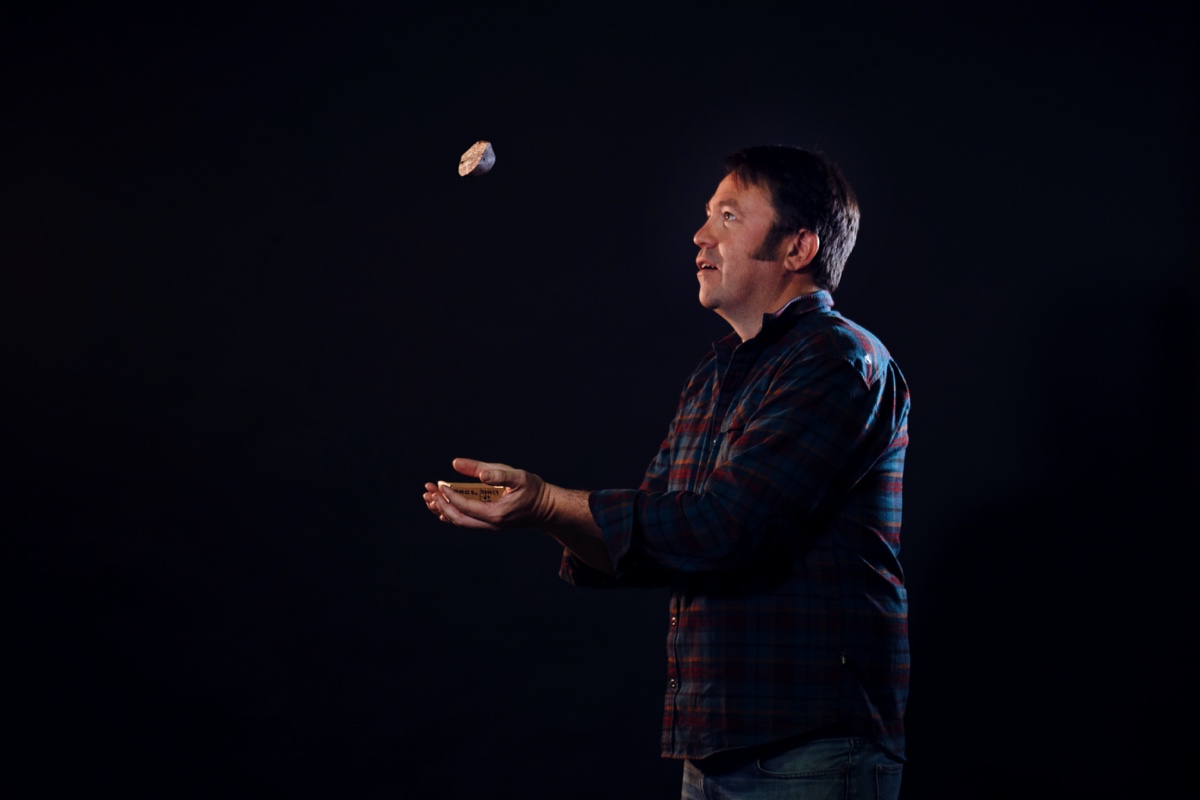A meteorite shower that blazed over western Queensland 140 years ago provided clues that allowed a University of New England geologist to name a mineral only found more than 500 km beneath Earth's surface.
An egg-sized fragment of that meteorite landing still sits in UNE's collections, where it is seen by few but carries a niche fame among geologists.
Fifty years ago, the fragment provided crucial evidence to support a theory that a mineral never seen on Earth's surface was present deep within the planet's mantle, a product of intense pressure and temperature.
The Tenham meteorite contained this mineral – but rather than being formed deep in the subterranean crush of a planet, the mineral was created in the instant that two large asteroids collided with colossal force somewhere in an orbit between Mars and Jupiter.
In 1879, about 300 rock fragments from that collision arced into Earth's atmosphere near Windorah, Queensland. Ninety years later, in 1969, legendary UNE geologist Dr Ray Binns published a seminal paper in the scientific journal Nature, in which he announced that the meteorite carried a new mineral he named "ringwoodite".
The name honours the Australian earth scientist Professor A.E. "Ted" Ringwood, who hypothesised that when magnesium silicate was subjected to immense pressures, it would morph into a new mineral.
For a mineral to be named, it has to appear on Earth's surface – and Prof Ringwood's hypothetical mineral can only be formed under enormous pressures of 20-24 gigapascals. On Earth, that means the mineral can only exist at depths of 525 to 660 km below the planet's surface.
Prof Ringwood's mineral thus remained a hypothesis – until Dr Binns started looking at the Tenham meteorite through an optical and electron microscope.
The meteorite has prominent stress veins, caused when the massive impact produced shockwaves that melted the parts of the rock they passed through.
When the rock crystallised again, it formed lumps of the mineral that Dr Binns called ringwoodite – a substance that literally forms the foundation of our existence, but which we only know from stardust.
Current-day UNE geologist and meteorite expert Dr Tim Chapman notes that while the Tenham meteorite is unremarkable to the eye, it has an extraordinary history.
Formed of cosmic dust at the very beginnings of the solar system, it was once part of an asteroid one to five kilometres in diameter spinning in the asteroid belt.
At some point in the last 4.6 billion years, the asteroid collided at high velocity with another asteroid of similar size, and the shattering impact created shock veins and the crystallisation of ringwoodite and other high-pressure minerals.
At least one piece of rock from that collision found its way to Earth in 1879 – and helped provide insights into the hidden depths of our planet that were formerly only guessed at.
More on the Tenham meteorite: https://en.wikipedia.org/wiki/Tenham_(meteorite)


